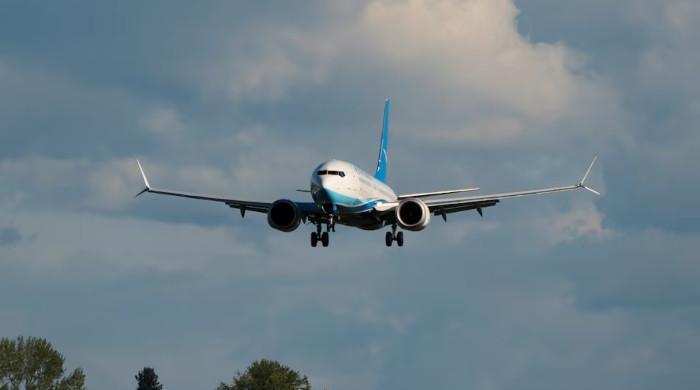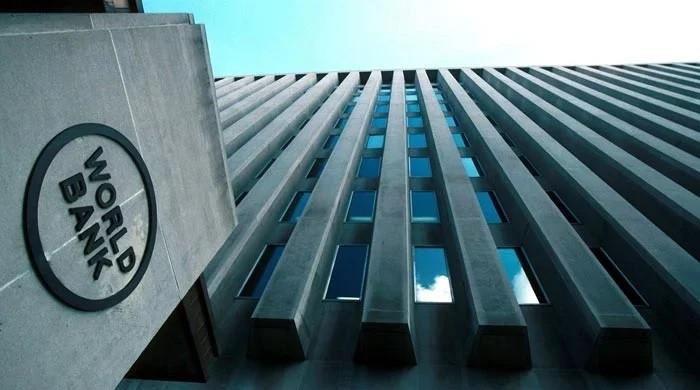Trump's import tariffs puts Pakistan at a regional disadvantage
US is Pakistan’s largest single-country export market, with exports valued at approximately $6 billion annually
April 04, 2025

ISLAMABAD: The tariff hike announced by US President Donald Trump is expected to erode Pakistan’s price competitiveness in the American market, making it more difficult to compete with "lower-tariff countries" like India and Turkey, according to The News.
A senior official at the Ministry of Commerce told The News that under Trump’s newly unveiled trade policy, Pakistani exports to the US will now face a total tariff of 39%, comprising a 10% baseline import duty and a 29% reciprocal tariff imposed on Pakistan, among over 180 countries and territories.
The new rates, which take effect from April 9, 2025, are set to significantly alter the dynamics of textile trade with the US.
The White House claims the reciprocal tariff is in response to what it describes as “unfair trade practices” and a 58% barrier on US goods entering Pakistan, a figure that reportedly includes non-tariff measures like currency controls. However, this estimate has not been independently verified.
The baseline 10% tariff will apply from April 5, 2025, with the additional 29% reciprocal tariff, starting April 9, 2025.
This has virtually replaced Pakistan’s trade status under the Generalised System of Preferences (GSP), which offered lower duties (typically 4-5%) on certain goods.
The US is Pakistan’s largest single-country export market, with exports valued at approximately $6 billion annually, predominantly textiles.
Certain goods such as copper, pharmaceuticals, semiconductors, lumber, gold, and energy are exempt from the reciprocal tariffs, as per a White House fact sheet, though they may still face the 10% baseline unless otherwise specified.
However, the new reciprocal tariffs established by the US president’s order are in addition to any other duties, fees, taxes, exactions, or charges applicable on some articles such as if the existing tariff on synthetic apparel is 32%, the new tariff will be 61% (32+29), reveals a paper prepared for the premier by the Commerce Ministry about the impact of the US tariffs on Pakistan exports.
However, All Pakistan Textile Mills Association (Aptma) Secretary General Shahid Sattar said Pakistan will have a “marginal impact” on exports, as the regional economies face more tariffs than Pakistan.
He highlighted that Bangladesh faces 37% reciprocal tariff plus a 10% baseline tariff, Sri Lanka 44% plus 10%, Vietnam 40% plus a 10% baseline tariff, and China 34% plus a 10% baseline tariff.
However, Washington says if any country reduces tariffs on US products, it will further reduce duties on that country’s products. He suggested that Pakistan should reduce the tariffs on US products. He said the textile industry is importing cotton from the US on zero duty.
The paper prepared by the Commerce Ministry says the tariff hike significantly increases the cost of Pakistani goods in the US, potentially reducing export competitiveness, especially in textiles, which account for a major share of its $6 billion in annual exports to the US.
This could lead to job losses in export-driven industries, a wider trade deficit, and higher consumer prices domestically if Pakistan retaliates or shifts trade elsewhere.
While some analysts suggest lower global commodity prices from trade disruptions might offset import costs for Pakistan, the immediate effect on its US-bound exports is likely to be negative, given the market’s importance (about 19% of Pakistan’s total exports in the first half of FY25).
This policy aligns with Trump’s broader strategy to shrink the US trade deficit ($918.4 billion in 2024) and boost domestic manufacturing, though Pakistan’s trade surplus with the US ($3 billion in 2024) is relatively small compared to giants like China.
The exact impact will depend on Pakistan’s response, potential negotiations and whether it can redirect exports to other markets. For now, the 39% total tariff marks a sharp escalation from prior concessionary rates, reflecting the administration’s aggressive stance on reciprocity.
Under the latest scenario, Pakistan will have a cost advantage of 46% over Vietnam, 49% over Indonesia, 49% over Cambodia, 54% over China, and 37% over Bangladesh. However, Pakistan will face a cost disadvantage of 26% over India, 10% over Turkey and 23% over Jordan, Egypt, and Central America.
This means Pakistan may still be competitive against higher tariff-hit nations but may struggle against lower tariff markets such as India and Turkey.
Textiles dominate Pakistan’s exports to the US, accounting for a significant portion of the $5.01 billion in trade (2023) including miscellaneous textiles of $3.87 billion, Knit/crochet clothing of $785.8 million, leather clothing & accessories of $591.8 million and cotton-related products of $1.03 billion
Pakistan will benefit relatively as Vietnam, Bangladesh, and Sri Lanka face even higher tariffs, potentially making them less competitive.
Turkey and Far Eastern countries could gain if they can fill supply gaps left by affected nations. Lesotho (50%) faces the highest tariff, while Myanmar (44%) and Cambodia (49%) are among the hardest-hit in Asia.
This new tariff is not applicable on the goods having more than 20% of the US originating material. Pakistani entrepreneurs will still have an option for the industry to use US cotton more and avail exemption.
More generally, the ad valorem rates of duty set forth in this order shall apply only to the non-US content of a subject article, provided at least 20% of the value of the subject article is US originating 29% is over and above the existing tariffs, as per the following provision of US Presidential Order.











